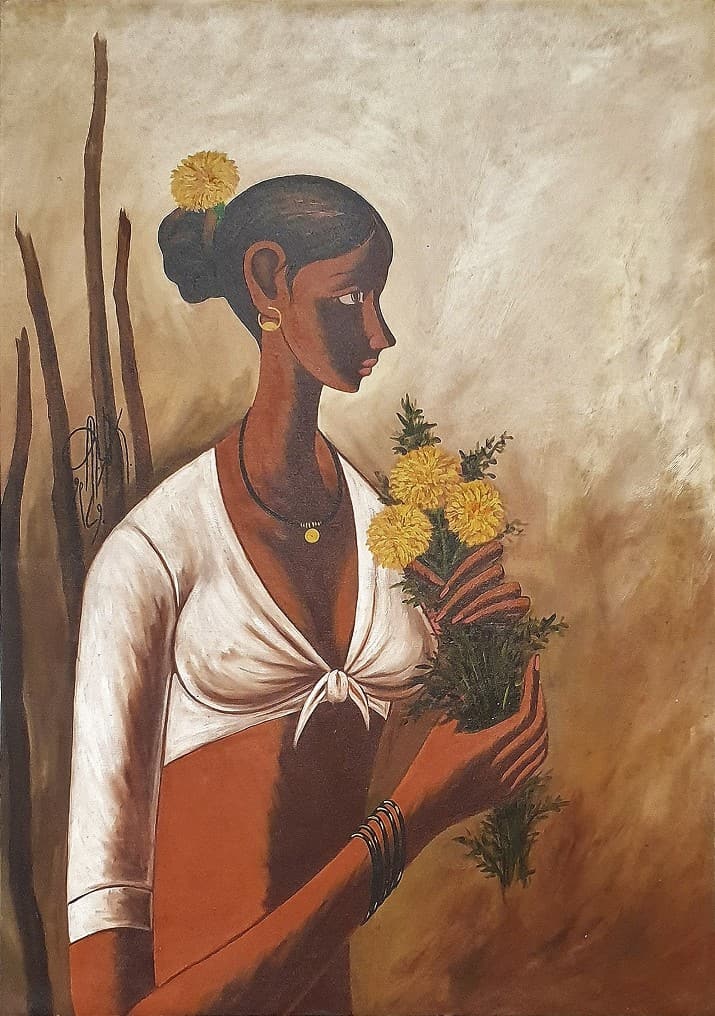Grasping the Art of Metaphorical Oil Paint: Vital Tips and Techniques for Aspiring Artists
Figurative oil paint stands for a complicated junction of technique and analysis, requiring a complete comprehension of human composition, make-up, and color theory. An expedition of shade harmony and structure strategies can considerably boost the aesthetic impact of their job.

Recognizing Human Anatomy
Understanding human composition is essential for any kind of musician desiring grasp metaphorical oil painting. An extensive understanding of the human form enables artists to develop natural depictions that reverberate with viewers. Knowledge of anatomical structures, such as joints, muscles, and bones, provides important insight into how the body moves and postures.
Musicians need to acquaint themselves with the percentages of the human figure, including the relationship between various body components and exactly how these percentages vary across ages and sexes. This understanding enables for accurate scaling and viewpoint in their job. Furthermore, comprehending the underlying musculature improves the ability to depict movement and stress in a number, leading to a much more engaging and dynamic make-up.
Researching composition also assists in determining subtle subtleties in pose and expression, which are important for communicating emotion and narrative within a paint. Resources such as anatomical books, life drawing sessions, and on-line tutorials can be very useful tools for artists looking for to deepen their physiological understanding. Ultimately, understanding human composition not only enhances technical ability however also improves a musician's creative vision, allowing them to bring their metaphorical oil paints to life with authenticity and depth.
Importance of Structure

Secret concepts of make-up consist of equilibrium, unity, and focal points. Achieving balance makes sure that no solitary component bewilders the others, while unity develops a feeling of harmony throughout the piece. Centerpieces accentuate substantial aspects of the art work, allowing viewers to engage with the story or theme much more deeply.
In addition, the use of leading lines and the policy of thirds can significantly improve make-up. Leading lines naturally assist the customer's look with the painting, while the rule of thirds provides a structure for positioning vital elements in an aesthetically enticing fashion. By grasping structure, aspiring musicians can boost their figurative oil paintings, changing them right into compelling visual tales that reverberate with their audience.
Learning Shade Theory
Color concept works as an essential element of metaphorical oil painting that matches the concepts of composition. Comprehending the color wheel, that includes primary, second, and tertiary shades, is necessary for producing unified combinations and effective aesthetic narratives.
Trick ideas such as worth, hue, and saturation play a critical duty in identifying the state of mind and effect of a paint. Musicians should discover amazing and cozy colors to evoke certain emotions; cozy colors commonly convey power and passion, while great colors can impart peace and tranquility.
The connection between complementary shades-- those opposite each various other on the shade wheel-- can create striking contrasts and vibrant compositions. When compared, these colors improve each various other's vibrancy, drawing the visitor's eye and adding depth to the art work.
Furthermore, recognizing analogous colors allows artists to accomplish a feeling of unity and coherence. By selecting colors that are surrounding on the wheel, one can maintain a balanced environment throughout the item.
Inevitably, mastering color concept outfits aspiring musicians with the devices essential to manipulate color purposefully, enhancing their capability to share emotion and narrative with metaphorical oil paint. figurative oil painting.
Techniques for Structure
A selection of strategies can efficiently develop structure in figurative oil paint, adding deepness and measurement to the art work. One basic approach is the use of impasto, where thick layers of paint are put on the canvas, enabling a three-dimensional quality. This technique enhances light interaction, creating dynamic visual passion.
An additional approach is scumbling, which entails using a slim layer of lighter paint over a dried darker layer. This method enables the underlying color to show through, resulting in a soft, textured result that can stimulate a feeling of ambience or age. Dry cleaning is additionally essential; using a dry brush with minimal paint, musicians can produce delicate textures and fine lines, perfect for capturing the subtleties additional hints of skin or fabric.
Additionally, combination knives can be utilized to apply or scuff paint, producing special patterns and appearances. Trying out various devices and products, such as sponges or dustcloths, can better enrich the textural quality of a painting. Eventually, mastering these methods calls for technique and experimentation, allowing artists to find the varied tactile top qualities that can raise their figurative jobs.
Establishing Your Unique Design
An artist's unique design is usually the end result of personal experiences, affects, and methods developed over time. Creating this uniqueness in figurative oil paint requires a conscious initiative to check out both your psyche and the wider creative landscape. Begin by reviewing the styles and topics that reverberate with you mentally; your enthusiasm will instill credibility into your work.
Study different designs and activities, but rather than mimicing, remove components that speak to you - figurative oil painting. Try out various strategies, shade palettes, and structures, enabling on your own the liberty to play without the stress of excellence. Keep a sketchbook or journal to document your thoughts, ideas, and artistic development; this will helpful site offer as a beneficial source for recognizing recurring themes and preferences
Seek constructive responses from coaches or peers, as they can provide insights that brighten elements of your work you might ignore. Be client with on your own; the journey of developing an one-of-a-kind style is ongoing, advancing with every canvas and each brushstroke you encounter.

Final Thought
Understanding metaphorical oil painting necessitates a thorough understanding of human composition, make-up, and shade theory. Welcoming these fundamental principles will dramatically benefit aiming artists on their creative trip.
Metaphorical oil painting stands for an intricate intersection of technique and interpretation, demanding a thorough understanding of human anatomy, structure, and shade concept. An expedition of color harmony and texture strategies can substantially boost the visual influence of their job. By mastering make-up, striving musicians can raise their metaphorical oil paintings, changing them right into compelling aesthetic stories that reverberate with their blog target market.
Experiment with different methods, shade palettes, and make-ups, permitting yourself the flexibility to play without the pressure of excellence.Understanding metaphorical oil painting demands a comprehensive grasp of human anatomy, structure, and shade theory.
Comments on “Grasping Composition and Color in Figurative Oil Painting”